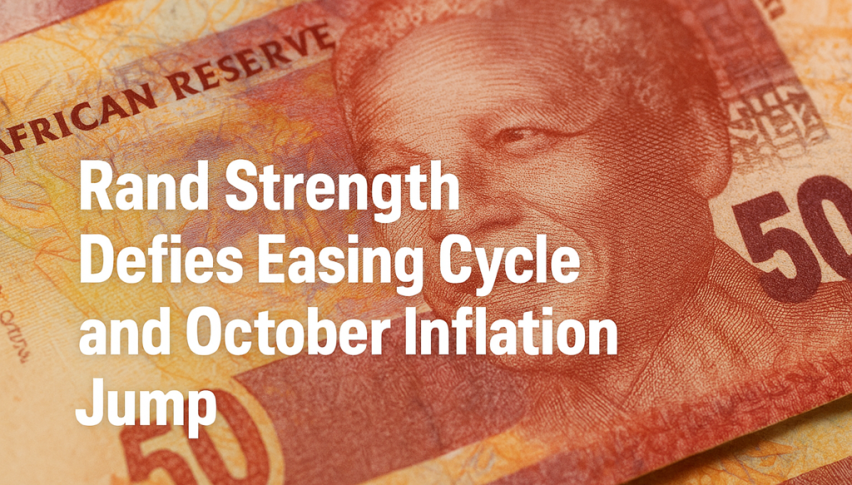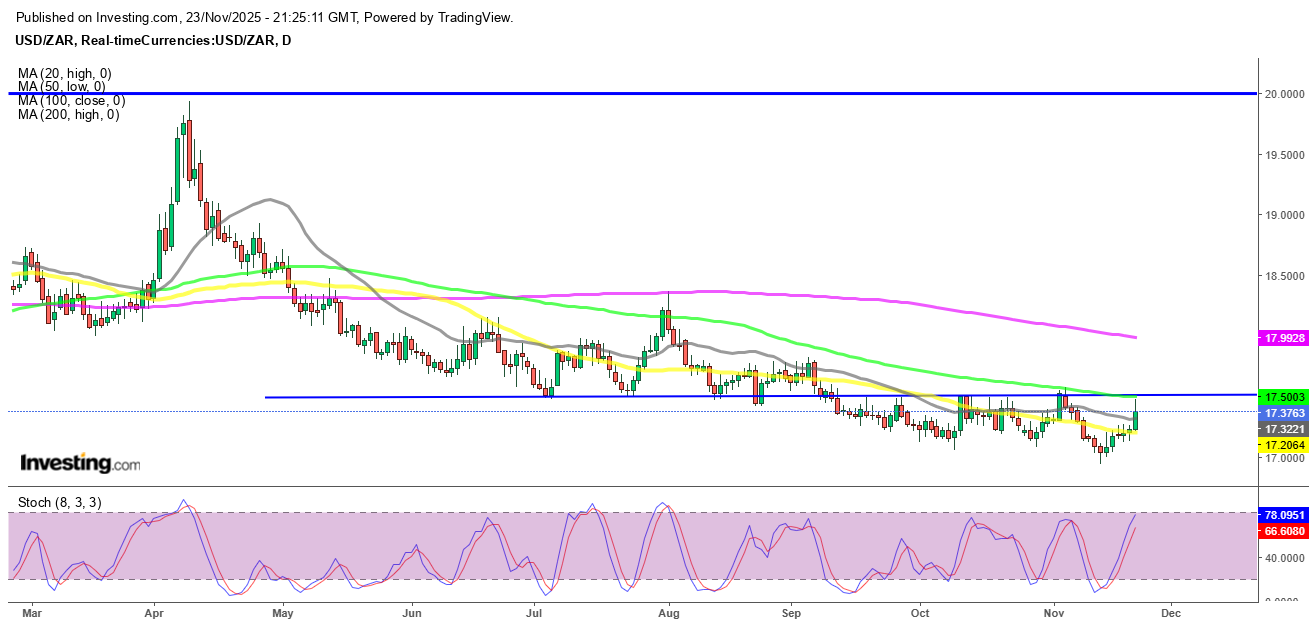South African Rand Forecast: Bears Fail, USD/ZAR Faces Fresh Pressure Despite SARB Rate Cut
As expectations for the South African rand's next move are reshaped by monetary easing, improved fiscal discipline, and a clearer inflation

Quick overview
- The South African rand is gaining strength due to monetary easing and improved fiscal discipline, with the USD/ZAR pair facing resistance at R17.50.
- The South African Reserve Bank's recent interest rate cut reflects confidence in the inflation trajectory, while the government has set a clearer 3% inflation target.
- Despite a rate cut typically weakening a currency, the rand has continued to strengthen, suggesting a bearish outlook for USD/ZAR.
- Concerns about the rand's long-term undervaluation are central to a legal case that could impact market integrity and economic fairness in South Africa.
As expectations for the currency’s next move are reshaped by monetary easing, improved fiscal discipline, and a clearer inflation objective, the South African rand continues to gain momentum.
Last week, USD/ZAR rebounded from the critical R17 level after the South African Reserve Bank initiated a long-anticipated interest rate cut, a move that reflected growing confidence in the country’s inflation trajectory. However, the rally stalled just beneath the stubborn R17.50 resistance zone, suggesting a lack of conviction among buyers.
USD/ZAR Chart Daily – Buyers Rejected at R17.50 Again
This hesitation now points to the potential for renewed downside in the pair during the coming week, with another test of R17 appearing likely — and possibly a break below that barrier — unless there is an unexpected surge in broad U.S. dollar strength.
SARB Signals a Shift With Its First Cut
In a decisive yet measured move, the South African Reserve Bank reduced its key policy rate by 25 basis points following a unanimous vote by its Monetary Policy Committee. This brought the repo rate down to 6.75%, while the prime lending rate moved to 10.25%, marking a meaningful change after a prolonged period of restrictive policy. The decision highlights the central bank’s growing comfort that inflationary pressures are no longer a significant threat to long-term stability.
This shift coincided with a significant political and economic signal from the government. Finance Minister Enoch Godongwana publicly endorsed a 3% inflation target, replacing the previous focus on the midpoint of the broader 3%–6% range. This clearer and more ambitious benchmark offered crucial policy support to the central bank, reinforcing a unified commitment to long-term price stability.
Improving Numbers Strengthen South Africa’s Standing
The rate cut occurred alongside a more optimistic fiscal outlook. In his mid-term budget review, Godongwana revealed better-than-expected tax revenues and a firmer approach to government spending. These developments improved international perceptions of South Africa’s economic management. Reflecting that renewed confidence, S&P Global Ratings revised the country’s credit outlook upward for the first time in decades — an important symbolic and practical boost for investor sentiment.
Together, stronger fiscal discipline and a more focused inflation strategy have helped convince markets that price pressures are being brought under control, opening the door for a more flexible monetary stance without undermining credibility.
Inflation Data Supports the Bank’s Decision
Although headline consumer price inflation ticked higher in October, the increase was largely the result of temporary factors rather than widespread, persistent price rises. Governor Lesetja Kganyago noted that specific items, such as red meat, played an outsized role in the monthly uptick. Official data placed annual inflation at 3.6% in October, up from 3.4% in September, yet still below market expectations.
Importantly, inflation has undershot forecasts for several consecutive months. These downside surprises, combined with a stronger rand and softer oil price assumptions, have enabled the Reserve Bank to lower its inflation projections for both 2025 and 2026, reinforcing the case for a more accommodative policy path.
Rand Strength Continues Despite Easier Policy
Normally, a rate cut would weaken a currency. However, the rand has continued to outperform even as borrowing costs were reduced. Since April, when USD/ZAR traded near R20 to the dollar, the rand has steadily strengthened, driving the pair back toward the psychologically important R17 level.
From a technical perspective, every recent attempt by the U.S. dollar to regain ground has been rejected by key resistance levels. The 50-day moving average has repeatedly capped upward moves, reinforcing the prevailing bearish structure for USD/ZAR. If this pattern remains intact, a sustained move below R17 could soon follow.
The Bigger Picture: Long-Term Devaluation Debate
According to the Big Mac Index, the South African rand is approximately 52% undervalued, raising questions about whether the currency has been deliberately weak for more than a decade. Allegations of manipulation date back to 2015, before South Africa was downgraded to junk status by Standard & Poor’s and Fitch in 2017, with Moody’s following in 2020.
A persistently undervalued currency has serious consequences. It feeds inflation, erodes purchasing power, discourages foreign investment, and slows economic growth. In its most damaging form, it contributes to job losses, particularly in sectors dependent on imports or exposed to international competition.
These concerns now sit at the centre of a landmark legal case before the Constitutional Court. The Competition Commission has appealed a ruling that previously cleared 13 international banks accused of influencing the rand’s value. A ruling in favour of the Commission would represent a powerful statement on accountability and market integrity.
For the average South African, such a decision would be about more than legal precedent — it would be about restoring fairness to the system and protecting the value of everyday income. In the end, justice in the market carries just as much weight as the price of basic necessities.
- Check out our free forex signals
- Follow the top economic events on FX Leaders economic calendar
- Trade better, discover more Forex Trading Strategies
- Open a FREE Trading Account



